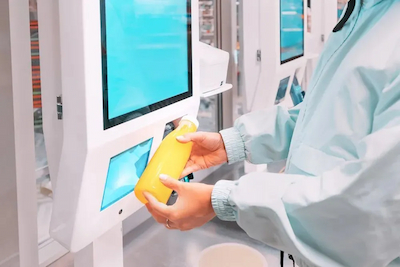In our daily lives, scanning actions are everywhere: supermarket cashiers beep as they scan product barcodes, warehouse managers use handheld devices to take inventory, parking lot gates automatically recognize license plates... Behind these convenient experiences lies one core component—the embedded scanner.
What is an embedded scanner?
1. Image Capture
· Illumination: The scanner's lighting system illuminates the target area, ensuring clear images even in low-light conditions.
· Imaging: The image sensor (like a miniature digital camera) rapidly captures an image of the barcode or QR code.
2. Image Processing and Decoding
· This is the core process. The processor performs a series of “image enhancement” operations:
· Grayscaling and Binarization: Converts color images to black-and-white, enhancing contrast.
· Noise Reduction and Filtering: Removes noise and interference from the image.
· Positioning and Correction: Identifies the barcode/QR code area and applies angle rotation and distortion correction.
· Finally, decoding algorithms parse the embedded numeric or textual information according to specific standards (e.g., Code 128, QR Code, Data Matrix).
3. Data Output

1. Retail and Logistics:
· POS Systems: Enable fast checkout and boost efficiency.
· Smart Warehousing: Conduct inventory counts with handheld terminals and update databases in real time.
· Parcel Sorting: Automatically recognize shipping label information to achieve automated sorting.
2.Industrial Manufacturing:
· Production Line Traceability: Scan DPM codes (Direct Part Marking) on PCBs or components for full lifecycle quality tracking.
· Robot Guidance: Provide navigation and positioning data for AGV/AMR vehicles.
3. Healthcare:
· Patient Management: Scan patient wristbands to ensure medication and examination accuracy.
· Pharmaceutical Management: Track medications throughout the entire process from inventory to use, preventing errors.
4. Smart Living:
· Self-Service Terminals: QR code payments on vending machines and self-service ticket kiosks.
· Access Control & Ticketing: Scan QR code tickets or membership cards for paperless access.
How to Choose the Right Embedded Scanner for Your Project?
1. Scan Type:
· 1D barcodes or 2D barcodes? Or both?
· Does it need to support DPM codes (Direct Part Marking etched onto metal or plastic)?
2. Decoding Capabilities:
· Does it support a comprehensive range of barcode types? (e.g., QR, DM, PDF417, Code 128, EAN-13, etc.)
· How is the decoding speed and accuracy?
3. Physical Interface:
· USB (plug-and-play, most common)
· UART/TTL (requires host-side driver development, often used with embedded boards)
· Bluetooth (suitable for mobile devices)
4. Reading Distance & Depth of Field:
· Is close-contact scanning required, or is long-range scanning (e.g., over 1 meter) needed?
5. Environmental Adaptability:
· Does it require industrial-grade dustproofing, waterproofing (IP rating), and drop resistance?
· How does it perform in bright or low-light conditions?
6. Size and Power Consumption:
· For portable devices, miniaturization and low power consumption are critical metrics.
Though small, embedded scanners serve as the vital bridge connecting the physical and digital worlds. They work tirelessly in every corner of our lives, driving efficiency gains and process automation. As developers, Syble understands and leverages this technology, opening new doors for your innovative projects.